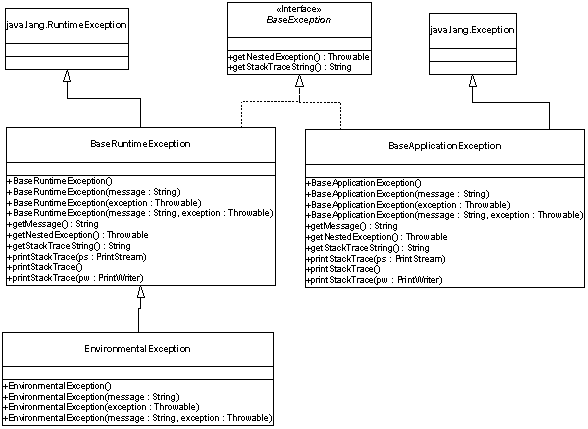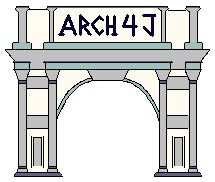The exception handling package provides a base seperation of business and system
exceptions, allows for nested exception stacks, and has a convenience method for
retrieving the stack trace as a String.
The class hierarchy is as follows:

The BaseException interface defines common functionality at the root of the two
base classes, BaseRuntimeException and BaseApplicationException. These
enforce the conceptual notion and handling of two distinct exception types, application
business exceptions and system exceptions. Application exceptions represent issues
exceptional to normal business flow, such as 'funds not available'. System exceptions
are typically environmental and development time issues, such as misconfigured property
files, code issues, or unavailable databases. Arch4J draws this distinction so that the
application developer may focus his code on the application issues at hand, not on the
environment the code lives in. System exceptions are java.lang.RuntimeExceptions
and therefore do not need to be declared or handled by business code. Using system
exceptions requires that business code lives in a contained environment that will eventually
handle these. The EJB environment is a good example of this. System exceptions are
automatically caught, logged, and indicated to client code without cluttering up the
application code. Arch4J defines other, non-EJB environments which are reinforced by the
code generator.
Nested exception handling is quite useful when it's necessary to add contextual
information to an exception or to repackage an exception in another to meet a method's
declared interface. Note that it is very unuseful to simply catch, nest and rethrow
exceptions at every level of business logic. This leads to cluttered log files. JDK 1.4
introduced nested exceptions to the language and Arch4J will soon incorporate this into its
own solution without modifying the existing exception interface.
The getStackTraceString() method is simply a convenience so that a developer can
get the stack trace as a String for logging or error debugging.


